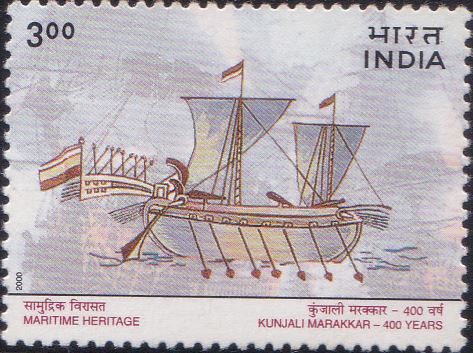
Kunjali Marakkar
A commemorative postage stamp on the Maritime Heritage – Kunhali Marakkar – 400 Years :

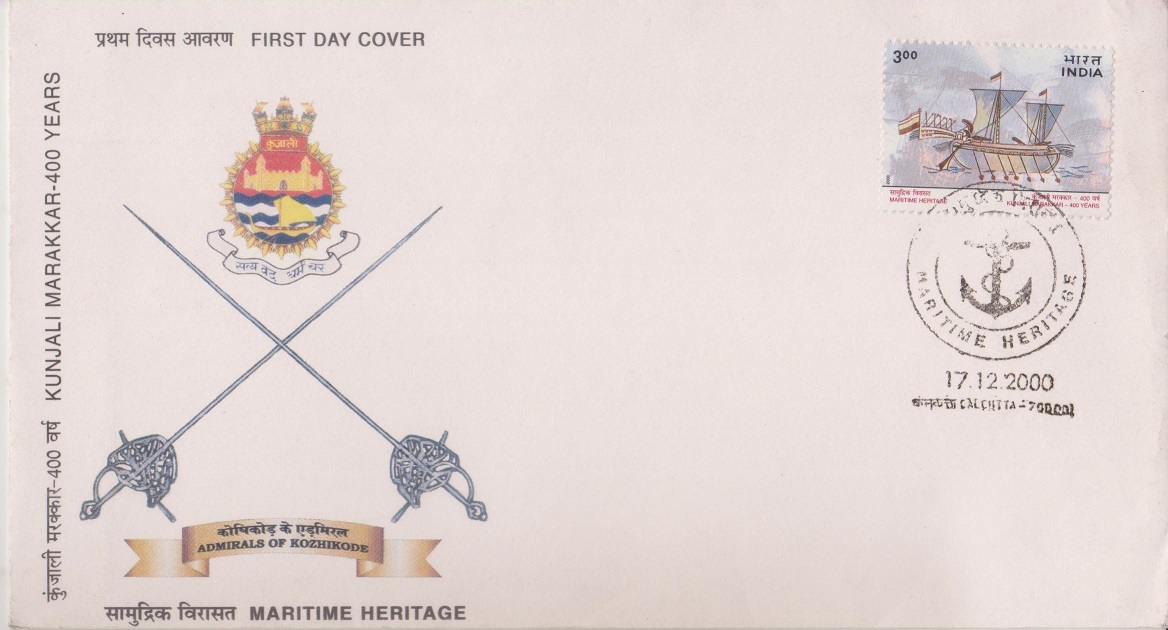 Issued by India
Issued by India
Issued on Dec 17, 2000
Issued for : The Department of Posts is proud to issue a stamp in honour of these great Admirals who wrote a heroic chapter in India’s Maritime History.
Design : The stamp design shows the war-paroe, a small craft used by the Kunjalis, which, manned by just 30-40 men each, could be rowed through lagoons and narrow waters. Several of these crafts were deployed at strategic points and they would emerge from small creeks and inconspicuous estuaries, attack the Portuguese ships at will, inflict heavy damage and causalities by setting fire to their sails and get back into the safety of shallow waters. In these guerrilla raids, the Marakkars had shown remarkable prowess.
The First Day Cover incorporates elements that symbolise the valour and courage of “Kunjali Marakkar“, the Great Admirals of Calicut.
Credits :
Stamp & FDC : Sankha Samanta
Cancellation : Alka Sharma
Type : Stamp, Mint Condition
Colour : Five Colour
Denomination : 300 Paise
Overall size : 2.91 x 3.9 Cms.
Printing Size : 2.75 x 3.9 Cms.
Perforation : 13.5 x 13.5
Paper : Matt Chromo
Stamps Printed : 0.7 million
Number per issue sheet : 40
Printing Process : Photo Offset
Printer : Calcutta Security Printers Ltd.
About :
- India‘s maritime heritage dates back to the Indus Valley Civilization (circa 3000 B.C.). The discovery of Lothal port and dock (circa 2400-1900 B.C.) bear testimony to this. By the 4th century B.C., as recorded by the Greek traveller Megasthenes who visited the court of Chandragupta Maurya, ship-building was an active industry and maritime ties with far-flung trading posts had become stabilized. The depiction of ships and boats in Ajanta caves (circa 600 A.D.) are indicative of advancement in technology from single sail ships to sewn plank ships with three sails. ‘Yuktikalpataru‘, a Sanskrit treatise of the eleventh century describes several types of ships and their uses. India‘s naval prowess reached new heights with the Chola kings, Raja Raja who annexed Lakshadweep and Maldives islands and, Rajendra who conquered Sri Lanka and established a naval base in Andaman and Nicobar in the eleventh century. The attempts of Chandrabhanu, the Sailendra King, in the thirteenth century to conquer Srilanka, in which hundreds of ships were employed indicate that navies of the Indian rulers continued to dominate the Indian Ocean.
- The power equations along India‘s coastline, however, changed with the advent of the European mariners in the fifteenth and sixteenth centuries. In the early 15th century, the Zamorins of Calicut were among the dominant rulers on the West Coast of India. Consequently, they also dominated the profitable spice trade from Malabar. After the landing of Vasco Da Gama in Calicut in 1498 A.D., the Portuguese slowly gained influence and started interfering in the trade. Long accustomed to free trade and the freedom of the seas, Indian seamen bitterly resented this interference.
- Mohammed Kunjali Marakkar, the first Admiral of Calicut who offered to the Zamorin his sword, ships and services, dedicated his entire energies in fighting the foreign domination of Indian seas. He was the first of the four Kunjalis who played a heroic part in the Naval wars with the Portuguese.
- The most famous of the Marakkars was Kunjali IV, who fought the Portuguese more fiercely than his predecessors and with far greater success. He further frustrated them by extending support to their enemies like the Rani of Ullal and the Sultan of Bijapur. However, the initial successes appear to have made him arrogant to the extent of ignoring the authority of the Zamorin. The Portuguese were quick to capitalise on the growing rift. They clinched a deal with Zamorin to suppress the ‘rebel’ Admiral, and in 1600 jointly laid siege of his fort, bringing to an end the long tradition of the legendary Marakkars. Kunjali IV who surrendered to the Zamorin was handed over to the Portuguese, only to be taken to Goa and executed. He displayed great dignity and courage till the last moment.
- Text : Based on material furnished by sponsors.


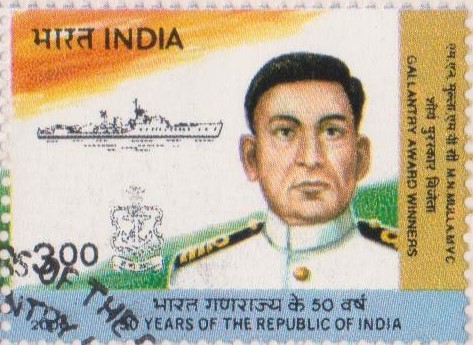
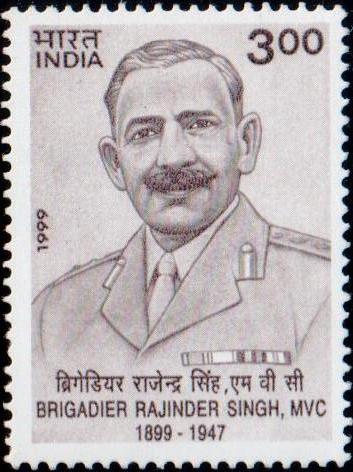
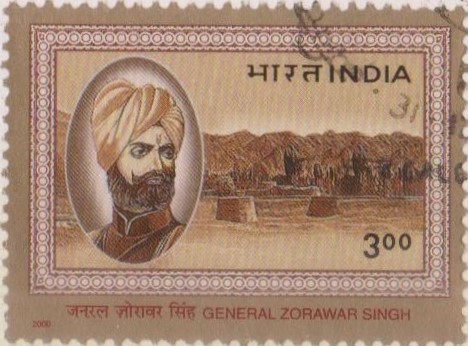
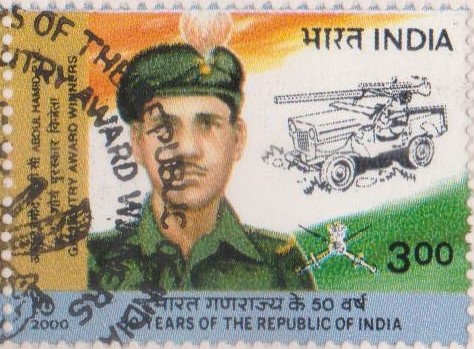
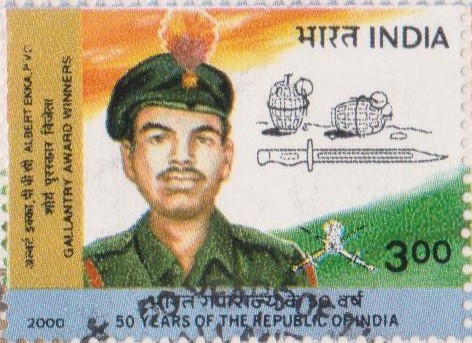
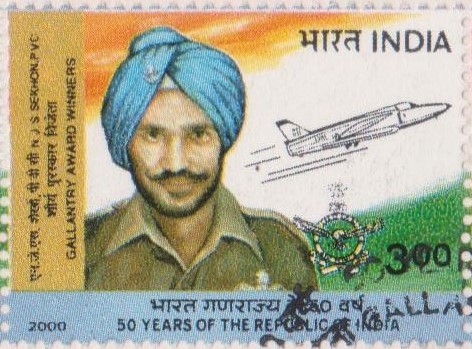
[…] local rulers from time to time were controlled by the Portuguese, Dutch, British and even the Zamorin of Kozhikode (Calicut), Around 1530 AD, under the Portuguese, Cochin grew into a prosperous town. […]